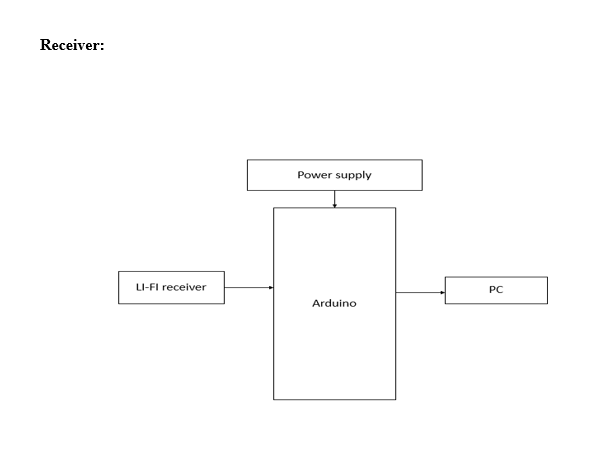Arduino Based Visible Light Communications Between Two Devices Using Li-Fi Technology
Objective
The main objective of this project is to transfer data from one PC to another PC by using Li-Fi Technology
Abstract
Data transmission through wireless medium has been prominently increasing in the current era due to many emerging technologies like Internet of Things (IoT). Most of the wireless communications happen through the air medium. Li-Fi (Light Fidelity) is a technology which transfers data using optical-like visible light. Data from the Arduino can go through the light and a while later be received on the receiver side using any light-sensitive device like LDR or photodiode. In this project, the data from the Arduino is sent using LED. It is decoded on the receiver side. Li-Fi uses visible light as a medium for the transmission of data. A LED can go probably as a light source and the photodiode goes probably as a receiver that gets light signals and decodes at the receiver side. Arduino is used for controlling the light at the transmitter side. At the receiver, the photodiode or Light-Dependent Resistor (LDR) changes over the received data into original information. A working prototype using Arduino and LDR to transfer the alpha-numeric data through Li-Fi technology has been developed and presented in this project.
NOTE: Without the concern of our team, please don't submit to the college. This Abstract varies based on student requirements.
Block Diagram

Specifications
Hardware requirements:
- Arduino
- Power supply
- Li-Fi Module
- PC
Software requirements:
- Arduino IDE
- Embedded C
Learning Outcomes
- Arduino pin diagram and architecture
- How to install Arduino IDE software
- Setting up and installation procedure for Arduino
- Introduction to Arduino IDE
- Basic coding in Arduino IDE
- Working of Li-Fi Module
- Interface Li-Fi Module with Arduino?
- Working of power supply
- About Project Development Life Cycle:
- Planning and Requirement Gathering (software’s, Tools, Hardware components, etc.,)
- Schematic preparation
- Code development and debugging
- Hardware development and debugging
- Development of the Project and Output testing
- Practical exposure to:
- Hardware and software tools.
- Solution providing for real time problems.
- Working with team/ individual.
- Work on Creative ideas.
- Project development Skills
- Problem analyzing skills
- Problem solving skills
- Creativity and imaginary skills
- Programming skills
- Deployment
- Testing skills
- Debugging skills
- Project presentation skills
- Thesis writing skills





 Paper Publishing
Paper Publishing
